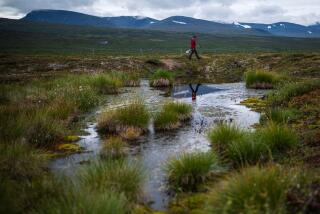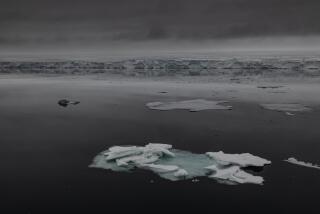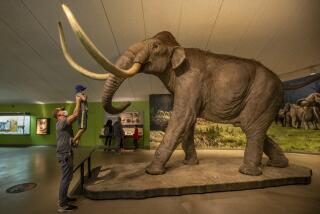Earth’s climate changed dramatically when CO2 hit 400, study says
Wondering where Earth’s climate is headed with an atmosphere that is 400 parts per million carbon dioxide?
An arctic bare of ice sheets, forested in pine and fir, with summer temperatures about 14 degrees Fahrenheit higher than today were typical some 3.5 million years ago, when atmospheric CO2 measures hovered around the 400 ppm range, according to researchers at the University of Massachusetts, Amherst.
The findings, based on sediment cores drilled from a Russian lake, don’t bode well for the current model of human-forced climate change, the researchers warn. They suggest that climate changes will be more amplified in the northern latitudes than currently predicted, according to a paper published in the journal Science.
“This could tell us where we are going in the near future,” the authors said in a written statement. “In other words, the Earth system response to small changes in carbon dioxide is bigger than suggested by earlier climate models.”
Even as a cyclical ice age approached about 2.2 million years ago in the northern hemisphere, the researchers found, warmer summer temperatures persisted in the Arctic far longer than previously thought.
The sediment cores, more than 1,000 feet long, were drilled from Lake El’gygytgyn, about 60 miles north of the Arctic Circle. They represent the longest continual record of Arctic sedimentation in the late Cenozoic era, and their fossilized pollen spores offer abundant clues to the ancient environment.
The lake was formed by a massive meteor impact about 3.58 million years ago that left a crater 7 miles in diameter, which soon began filling with runoff from the surrounding area. At the time, forests stretched to the coast of the Arctic Sea, and Greenland had no ice sheets.
Some 20,000 to 180,000 years later, the climate of the area reached an extreme that was about 14 degrees warmer and got about 15 inches more precipitation than the area experiences today, according to the study.
By about 2.7 million to 2.5 million years ago, data show, the area began to transition from forest to a treeless, shrubby environment as the northern hemisphere cooled due to changes in Earth’s axis.
Cores drilled in other areas of the terrestrial Arctic confirm the warm trend.







